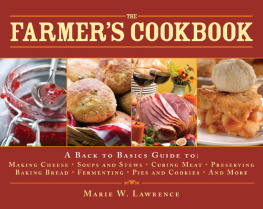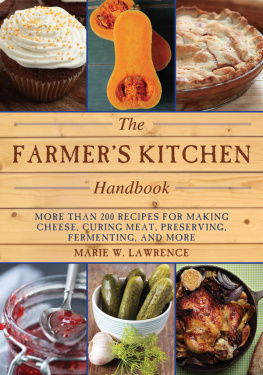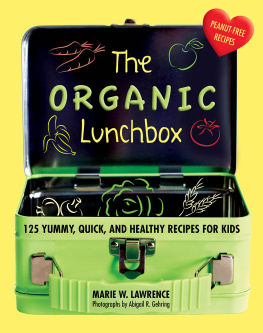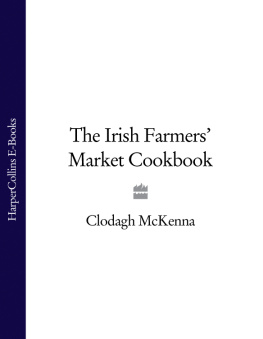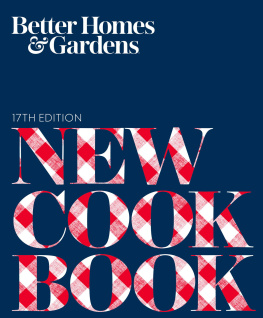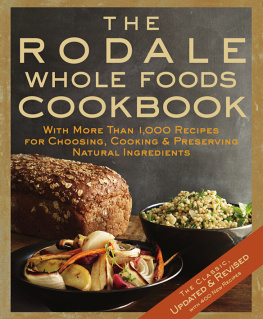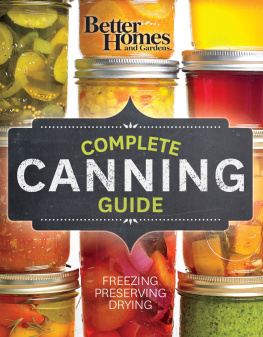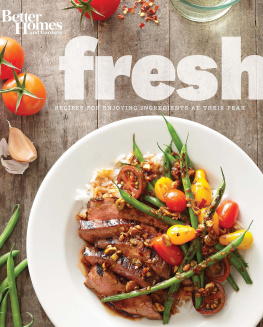


A B ACK TO B ASICS G UIDE TO
M AKING C HEESE C URING M EAT P RESERVING P RODUCE B AKING B READ
F ERMENTING AND M ORE

M ARIE W. L AWRENCE


THE FARMERS COOKBOOK
Copyright 2011 by Marie W. Lawrence
All Rights Reserved. No part of this book may be reproduced in any manner without the express written consent of the publisher, except in the case of brief excerpts in critical reviews or articles. All inquiries should be addressed to Skyhorse Publishing, 307 West 36th Street, 11th Floor, New York, NY 10018.
Skyhorse Publishing books may be purchased in bulk at special discounts for sales promotion, corporate gifts, fundraising, or educational purposes. Special editions can also be created to specifications. For details, contact the Special Sales Department, Skyhorse Publishing, 307 West 36th Street, 11th Floor, New York, NY 10018 or info@skyhorsepublishing.com.
Skyhorse and Skyhorse Publishing are registered trademarks of Skyhorse Publishing, Inc., a Delaware corporation.
www.skyhorsepublishing.com
10 9 8 7 6 5 4 3 2 1
Library of Congress Cataloging-in-Publication Data
Lawrence, Marie W.
The farmers cookbook : a back to basics guide to making cheese, curing meat, preserving produce, baking bread, fermenting, and more / Marie W. Lawrence.
p. cm.
Includes bibliographical references and index.
ISBN 978-1-61608-380-9 (alk. paper)
1. Cooking, AmericanNew England style. 2.Cooking, American. 3.Cookbooks.
4. Farm lifeNew England. I.Title.
TX715.2.N48L39 2011
641.5974dc23
2011014984
Printed in China
To my family, past, present, and future, with love
and for the farmer in each of us.

Contents
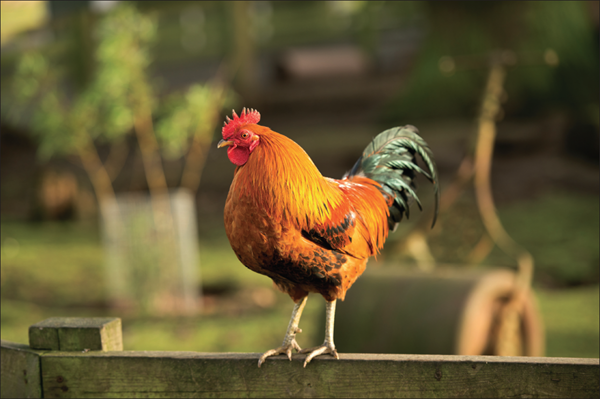
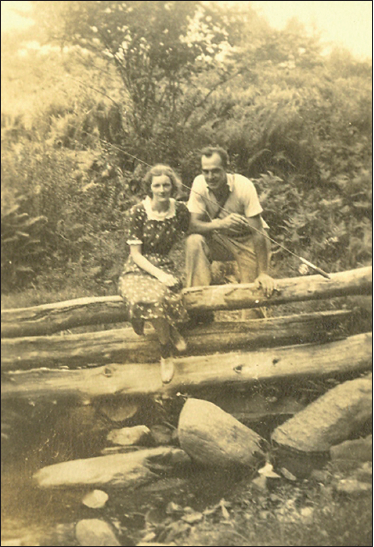
My parents, Evelyn and William Wheelock, circa 1935.
The Farmers Cookbook
Growing Up in Farm Country
W HEN MY PARENTS decided to buy a piece of land out in the country, they did my brothers and me the biggest favor we could have imagined. We grew up in Vermont during the 1950s and 1960s, living a rural lifestyle that in many aspects has since disappeared. Folks in our neighborhood were, for the most part, either full-time farming families or those such as my parents who kept gardens; raised a few animals for meat, milk, or pets; and generally felt the benefits of living in the country far outweighed the drawbacks.
A country upbringing gives you an appreciation of fresh air, fresh water, and good, fresh food. You also learn to appreciate the long hours farm folk put in every day of the week to care for their animals, crops, and the land that sustains them (and us) all. Self-reliance and pride of a job well done go hand in hand in this profession.
Farming has been around this good green planet for a number of centuries now, and it is probably one of the most universal occupations in the world. It may take many forms, from tiny subsistence holdings in remote areas to immense factory farms that bear little resemblance to the family farmsteads of not so long ago. And a whole lot of it takes place outside of Vermont!
Although I have incorporated a few recipes with an international flavor, much of my perspective is from rural New England, land of my paternal grandfather. Youll also notice the influence of my immigrant grandparents, from Scotland, Sweden, and Finland. No matter what the origins of any recipe may be, this cookbook is about getting back to the basics in order to produce delicious food. I really like to know just what it is Im putting in my mouth before I eat it, and preparing food from scratch is a great way to figure that out. You dont have to spend a fortune at the grocery store in order to do this, although you do need to be willing to take a little bit of time. Understanding how to create your own homemade products can be pleasantly empowering and a lot of fun as well.
If youre able to grow a fair amount of your own food as I do, thats a wonderful thing. However, modern society being what it is, many folks no longer have this option. Fortunately for us all, even as some kinds of farming have slid by the wayside, other types are becoming more prevalent. Farmers markets are flourishing, and in many areas, there are local farm stands dotting the roadsides. If you happen to live in an urban area, dont despair. Community gardens and innercity farmers markets are becoming more viable by the day. Even if all you have is a sunny window, you might just be able to grow a few herbs or some radishes. For when you get right down to it, theres a little bit of the farmer in us all.


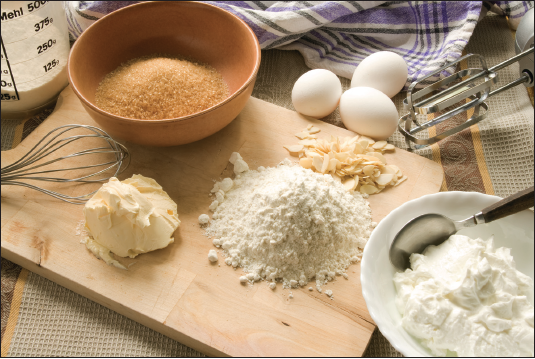
General Cooking,
Baking, and Preserving
Guidelines
Safety First!
Safe Cooking Techniques for Eggs
T HE ISSUE OF possible salmonella contamination from eggs is a tricky one. Ingesting an undercooked salmonella-infected egg may cause unpleasant symptoms like nausea, vomiting, and intestinal cramping. The very young, very old, pregnant women and those with compromised immune systems carry the potential for more serious complications. Approximately one in every twenty thousand eggs may contain salmonella. Although at one time the shells were considered the sole purveyor of this pathogen, there is now the slim chance a contaminated hen may carry it in her intestines or ovaries, in which case you could become ill from eating any part of the egg. Cooking your eggs to at least 160F is the safest solution. Ive read a number of articles on home-pasteurization techniques for eggs, several of which recommend coddling the whole eggs in the shell in water at a temperature of 150F for four minutes and then chilling them quickly. Im not sure what the safest technique is, although I strongly recommend not cutting corners when you purchase eggs. Commercially pasteurized eggs are available in some areas of the country, or if you raise your own chickens, youll be able to control such variables as growing conditions and freshness. Your chickens and the quality of the eggs they produce will depend on your good husbandry for their good health, and ultimately yours. If you purchase eggs, buy the freshest, best quality you can find and check that the shells are clean and solid. Refrigerate them promptly at 40F or cooler and maintain cooked eggs at 140F or higher for brief periods only.
Next page
